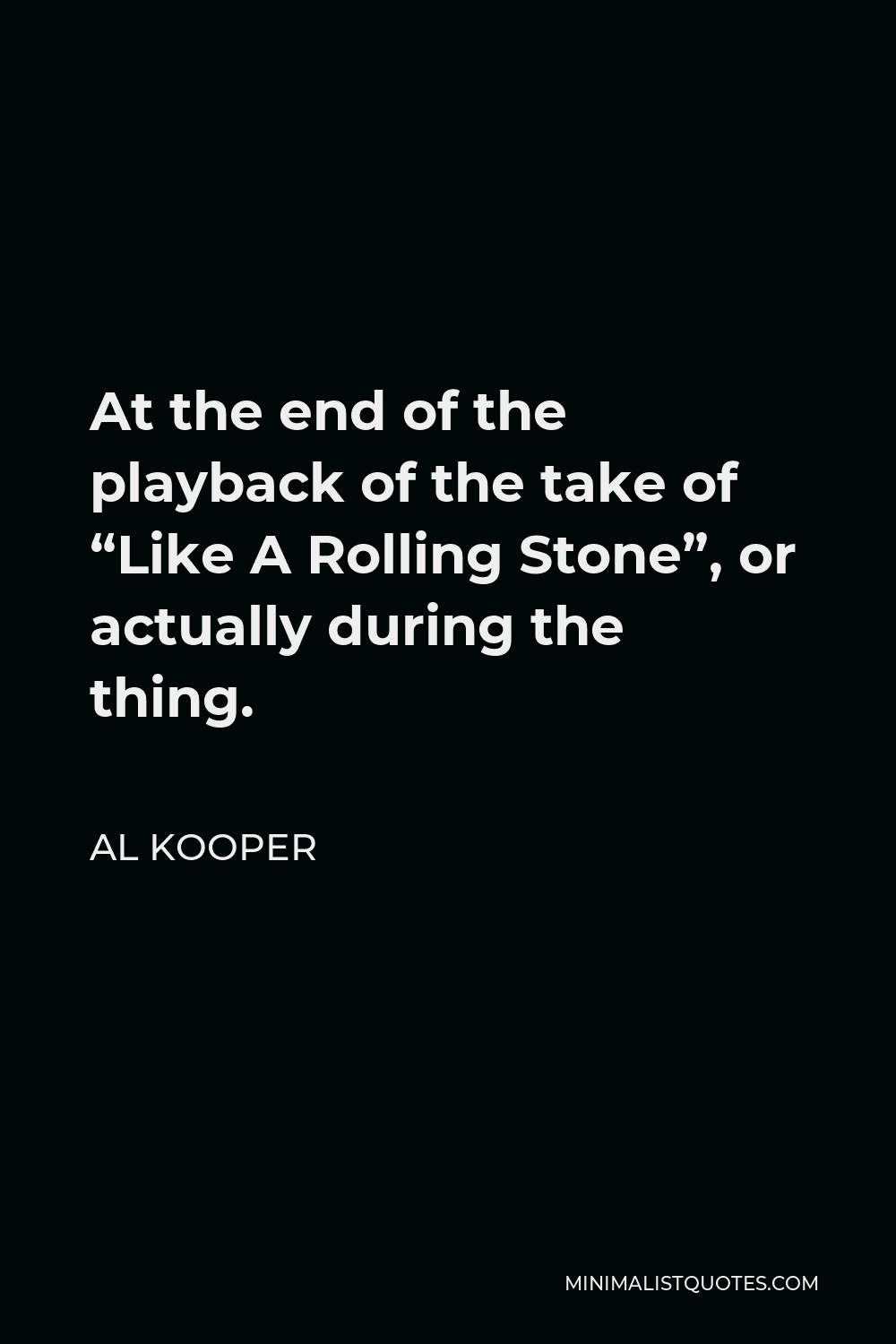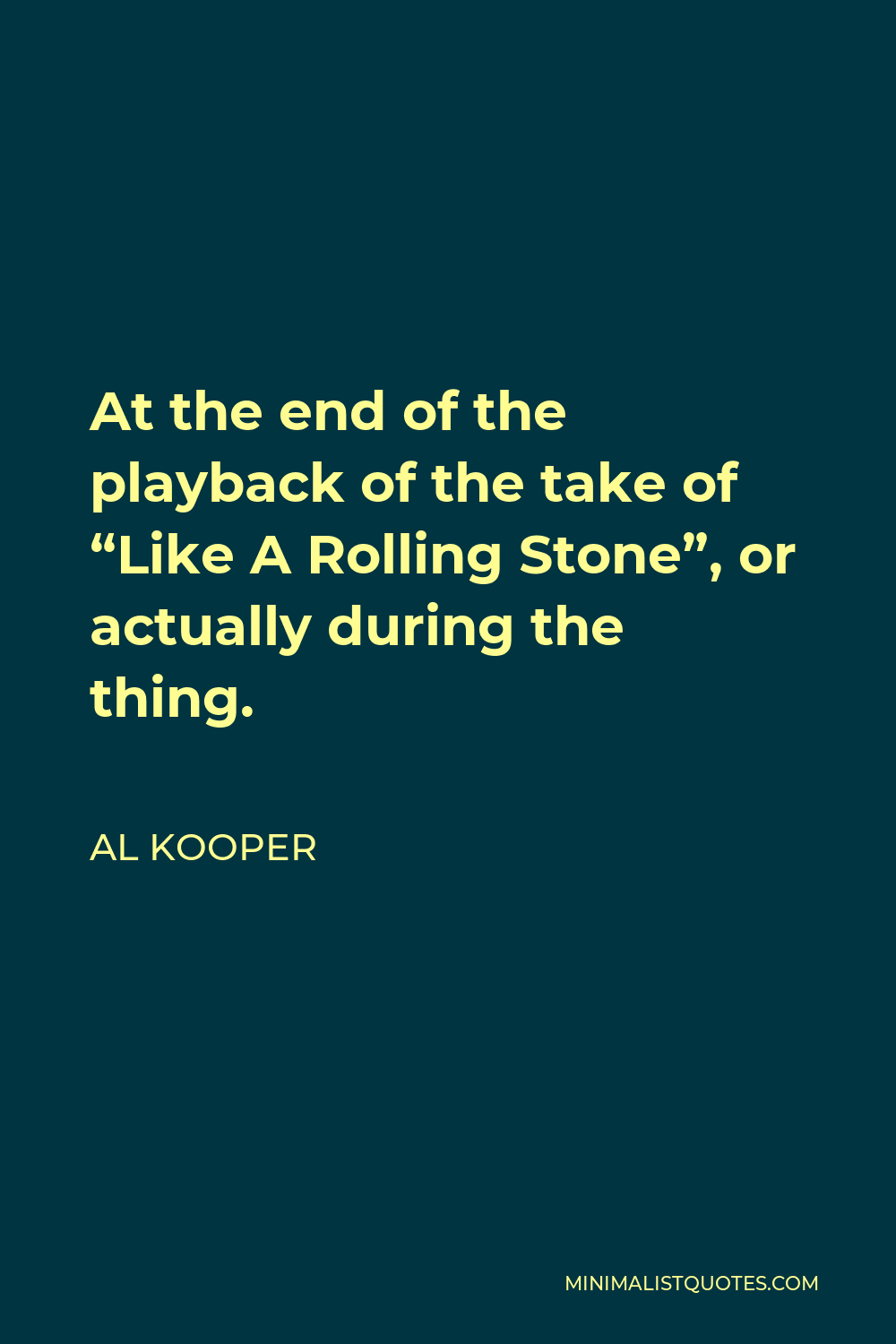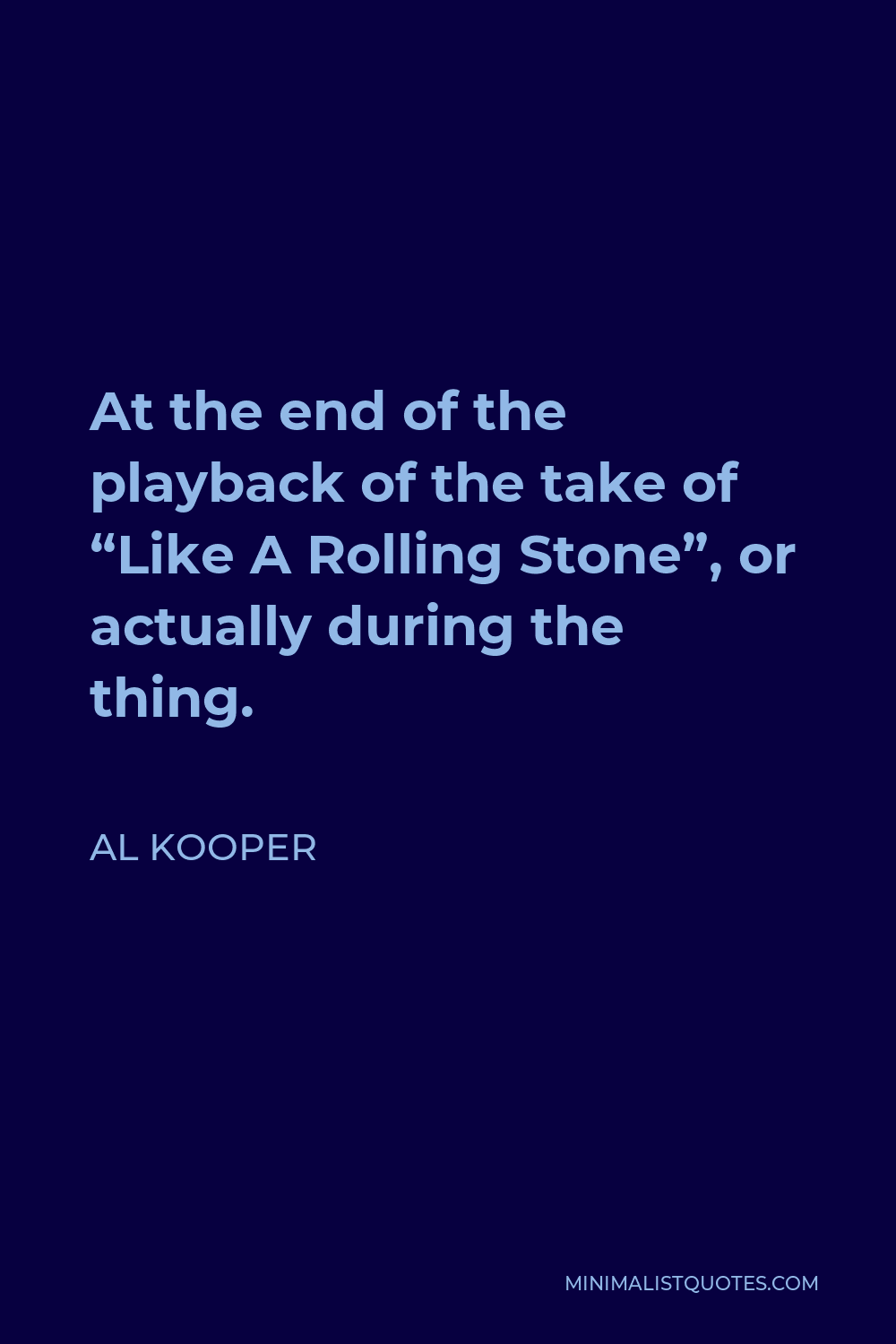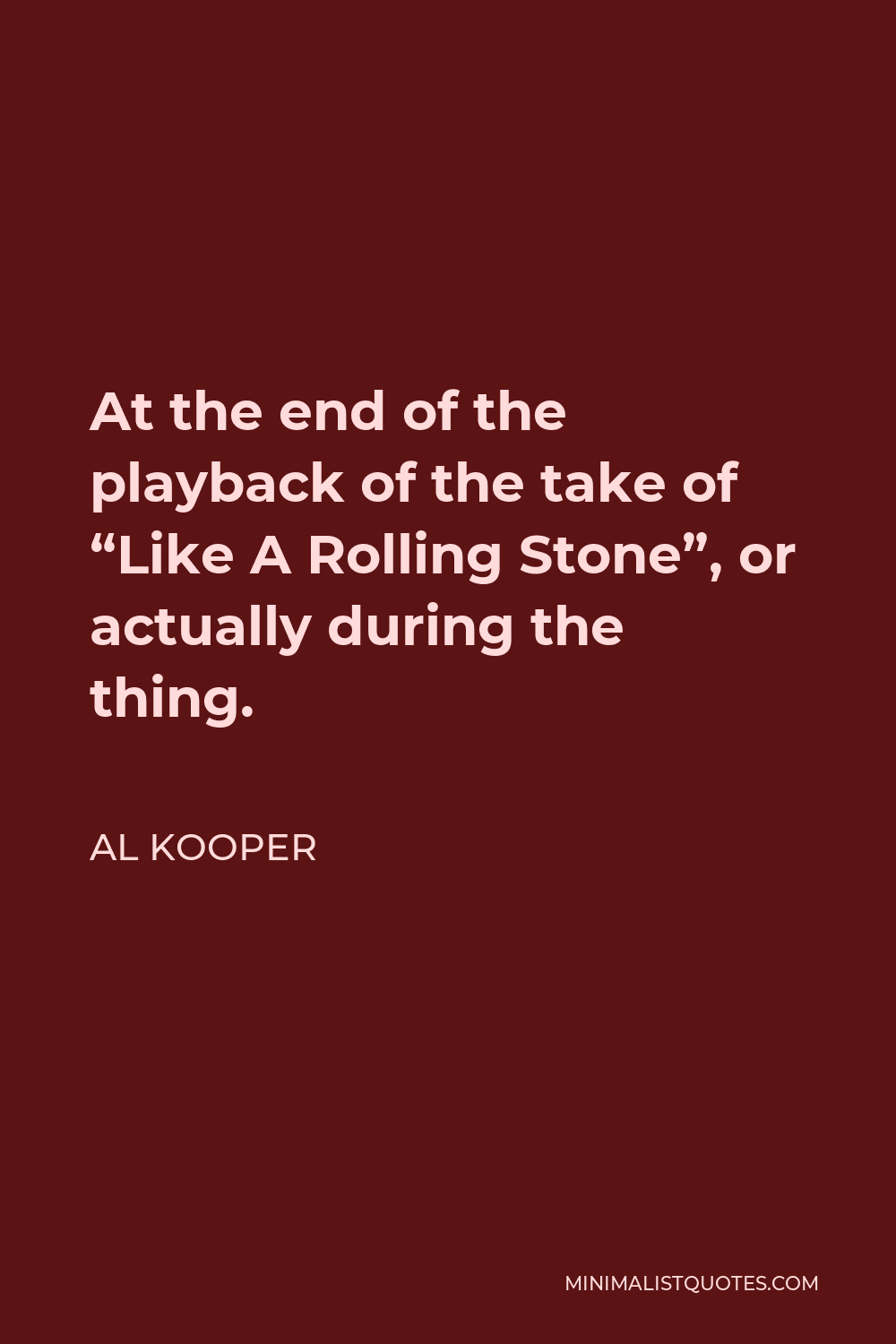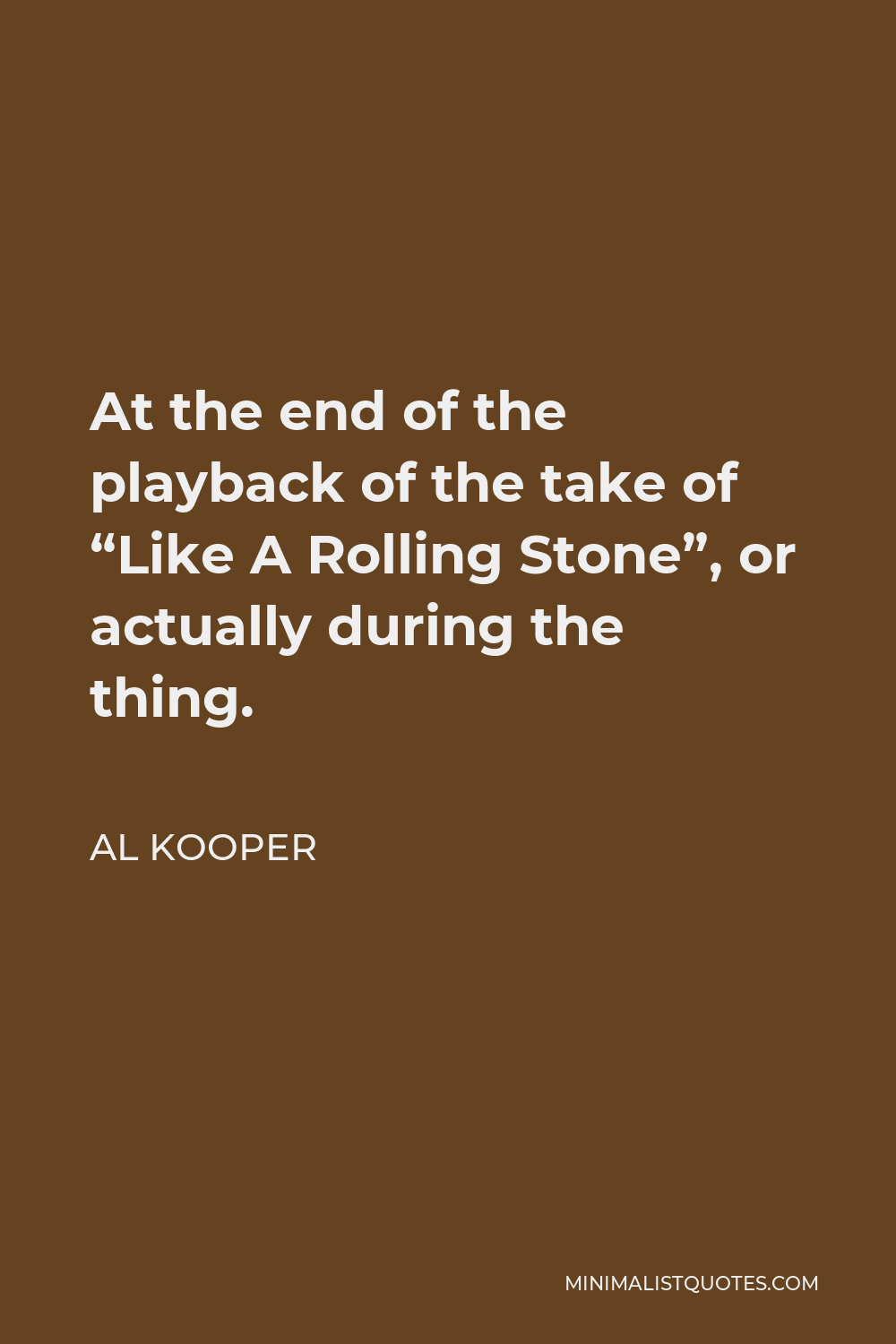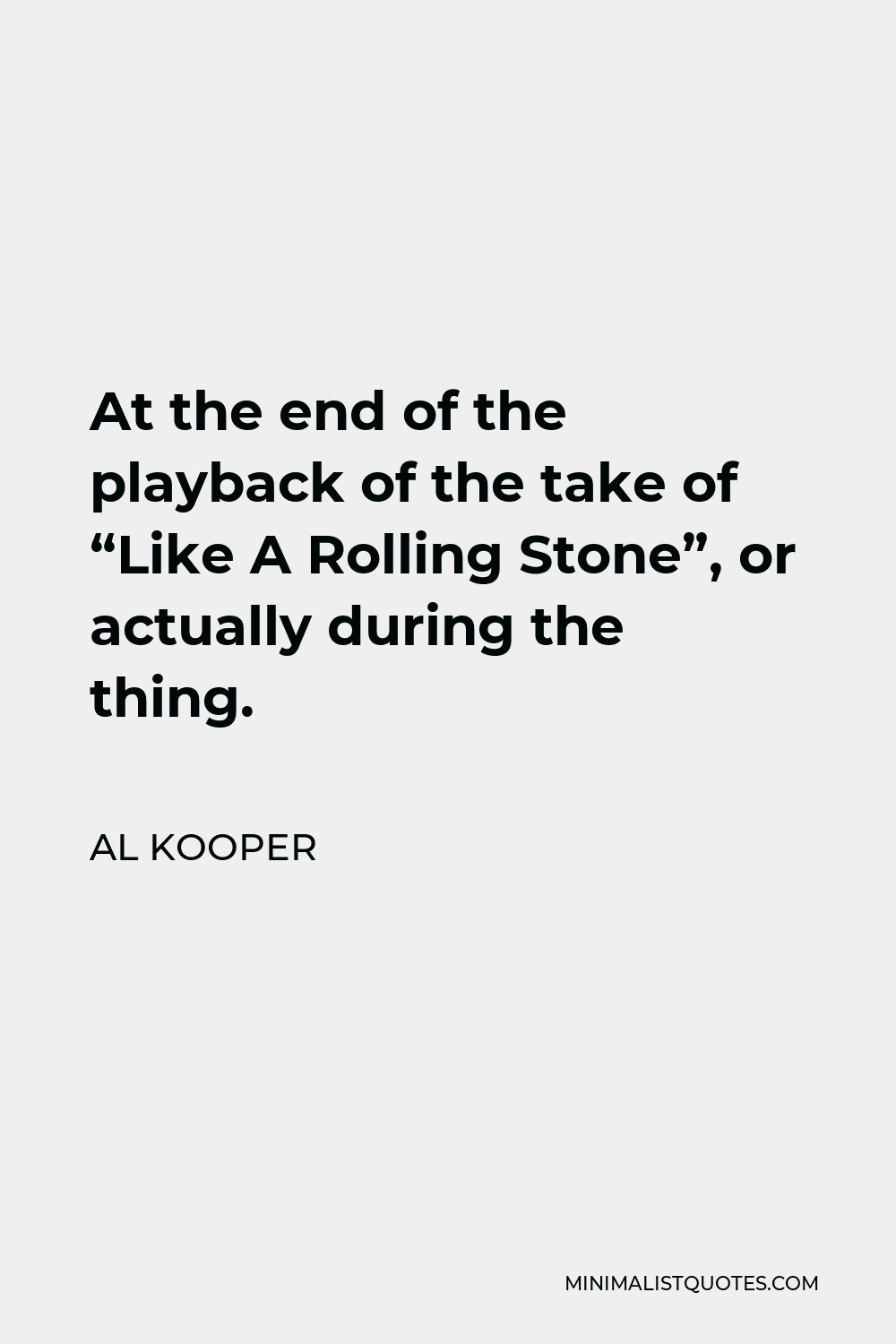I liked being challenged by music. It’s good for me.
AL KOOPERAt the end of the playback of the take of “Like A Rolling Stone”, or actually during the thing.
More Al Kooper Quotes
-





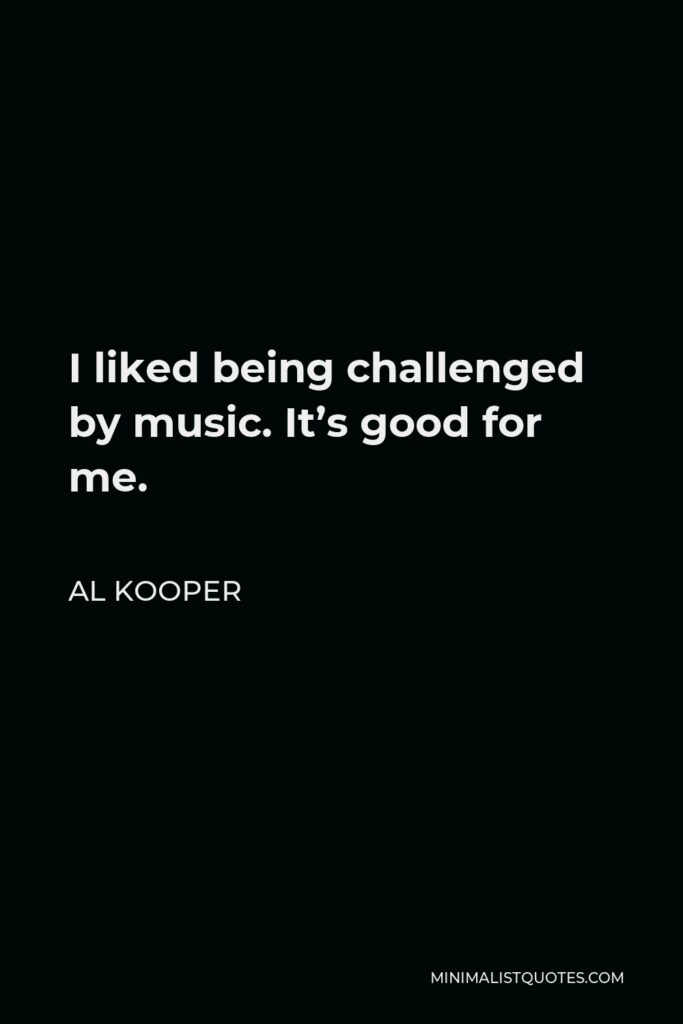

-





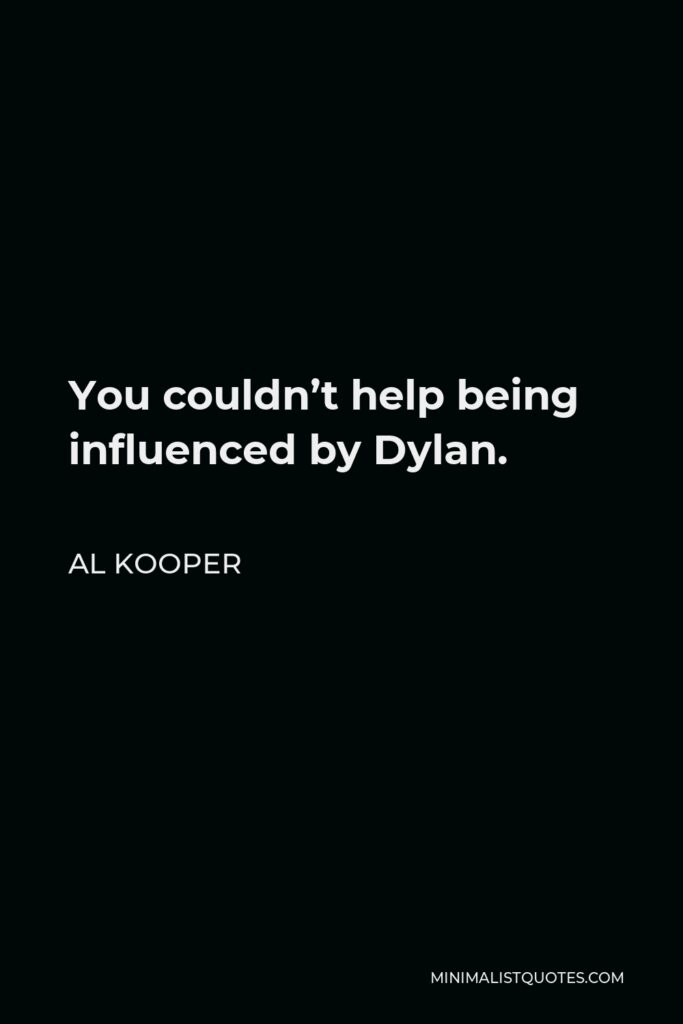

You couldn’t help being influenced by Dylan.
AL KOOPER -





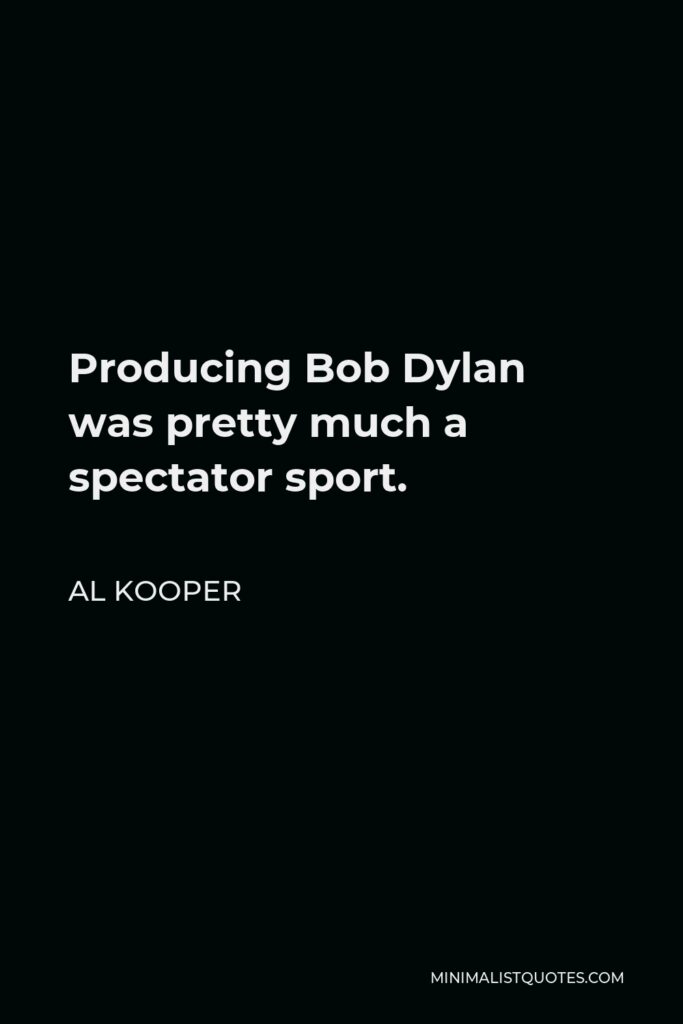

Producing Bob Dylan was pretty much a spectator sport.
AL KOOPER -





![Al Kooper Quote - The “Highway 61” album [of Bob Dylan] was produced by Bob Johnston if I’m not incorrect. And Bob Johnston was an entirely different producer than Tom Wilson.](https://minimalistquotes.com/wp-content/uploads/2022/07/the-highway-61-album-of-bob-dylan-was-produced-by--683x1024.jpg)

The “Highway 61” album [of Bob Dylan] was produced by Bob Johnston if I’m not incorrect. And Bob Johnston was an entirely different producer than Tom Wilson.
AL KOOPER -





![Al Kooper Quote - Only through sheer ambition did I end up playing on [Bob Dylan sessions] and the fact that I could do that is a testament to how disorganized it really was.](https://minimalistquotes.com/wp-content/uploads/2022/07/only-through-sheer-ambition-did-i-end-up-playing-o-683x1024.jpg)

Only through sheer ambition did I end up playing on [Bob Dylan sessions] and the fact that I could do that is a testament to how disorganized it really was.
AL KOOPER -





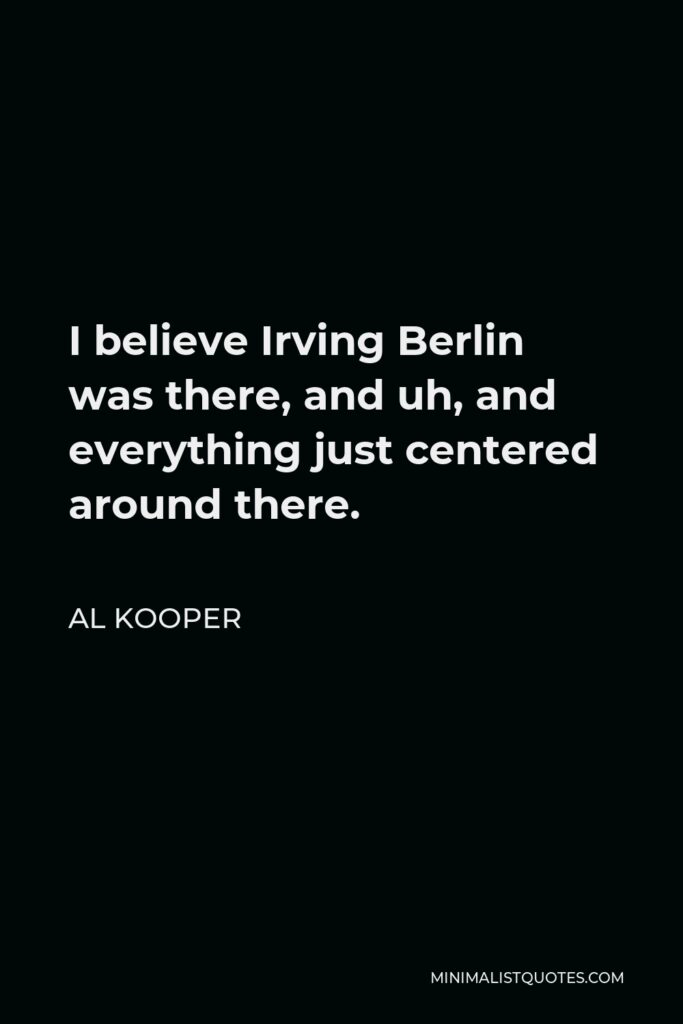

I believe Irving Berlin was there, and uh, and everything just centered around there.
AL KOOPER -





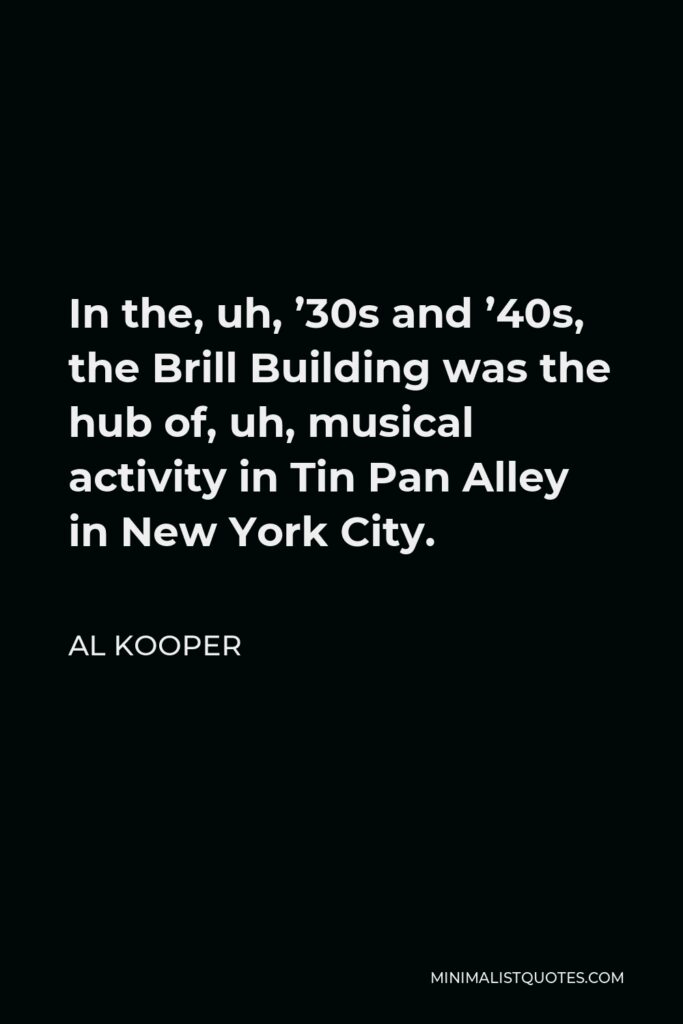

In the, uh, ’30s and ’40s, the Brill Building was the hub of, uh, musical activity in Tin Pan Alley in New York City.
AL KOOPER -





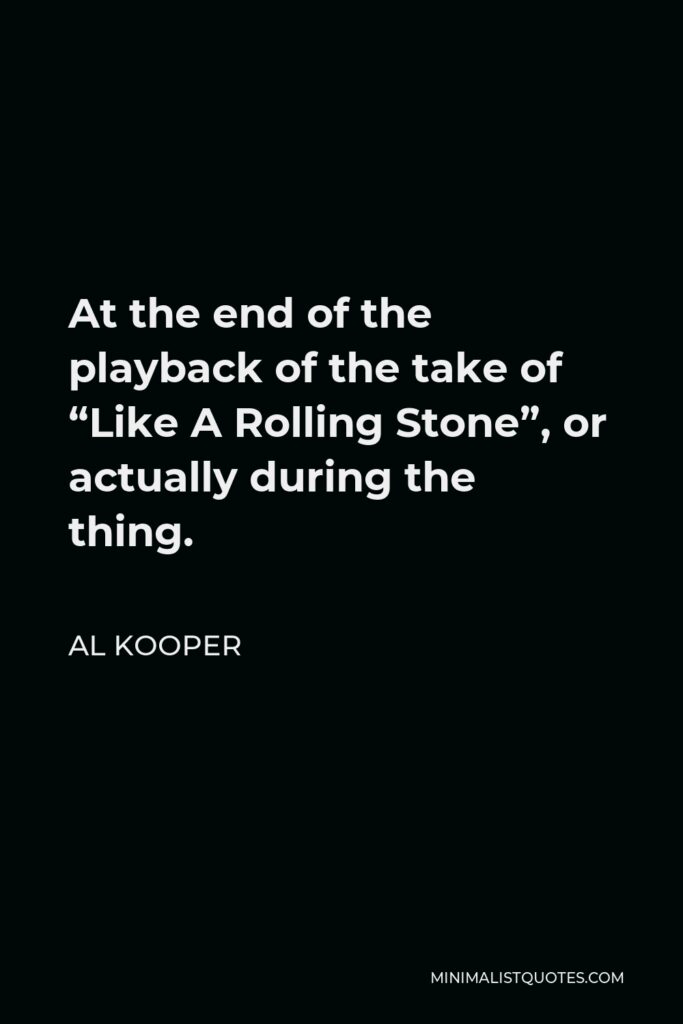

At the end of the playback of the take of “Like A Rolling Stone”, or actually during the thing.
AL KOOPER -





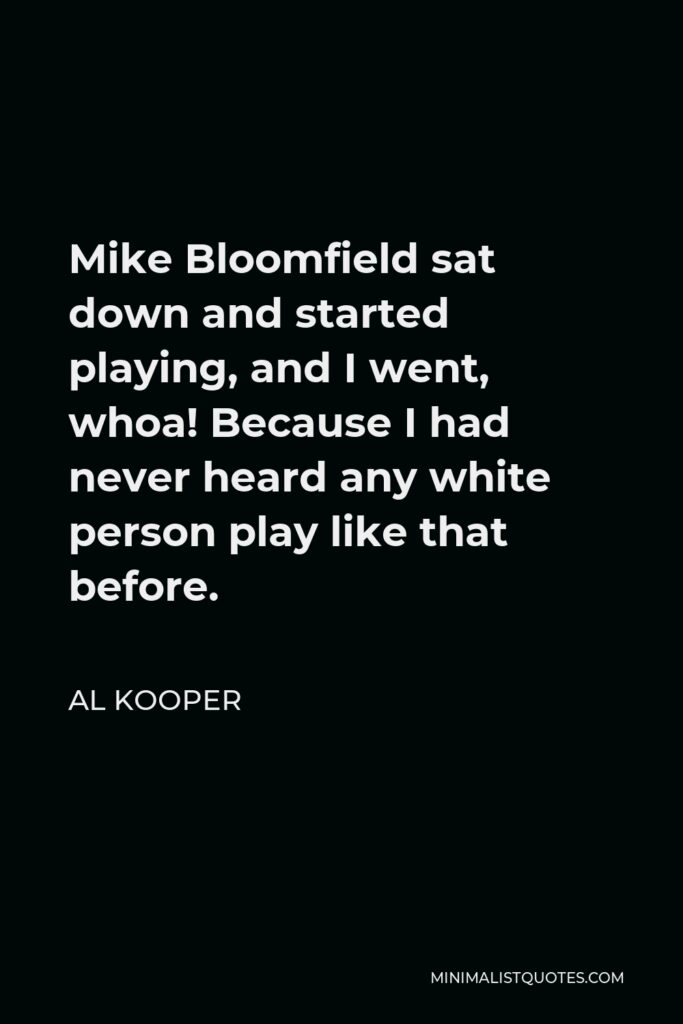

Mike Bloomfield sat down and started playing, and I went, whoa! Because I had never heard any white person play like that before.
AL KOOPER -







My influences were mostly gospel. So I was playing my twisted Jewish equivalent of gospel music over his twisted equivalent of rock and roll music. And it was a very excellent marriage.
AL KOOPER -





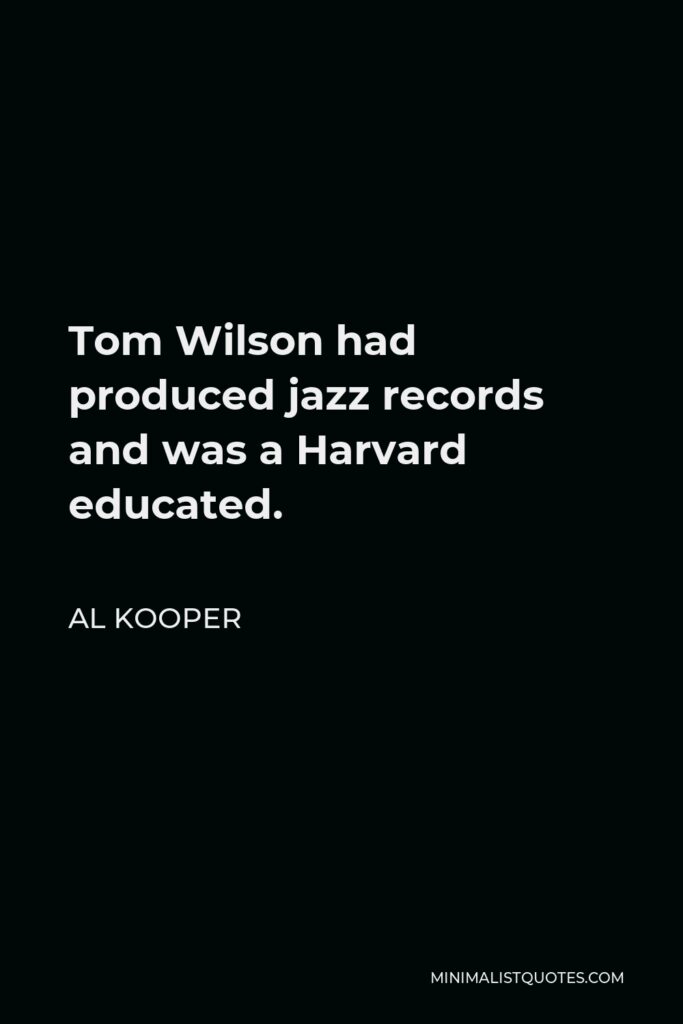

Tom Wilson had produced jazz records and was a Harvard educated.
AL KOOPER -





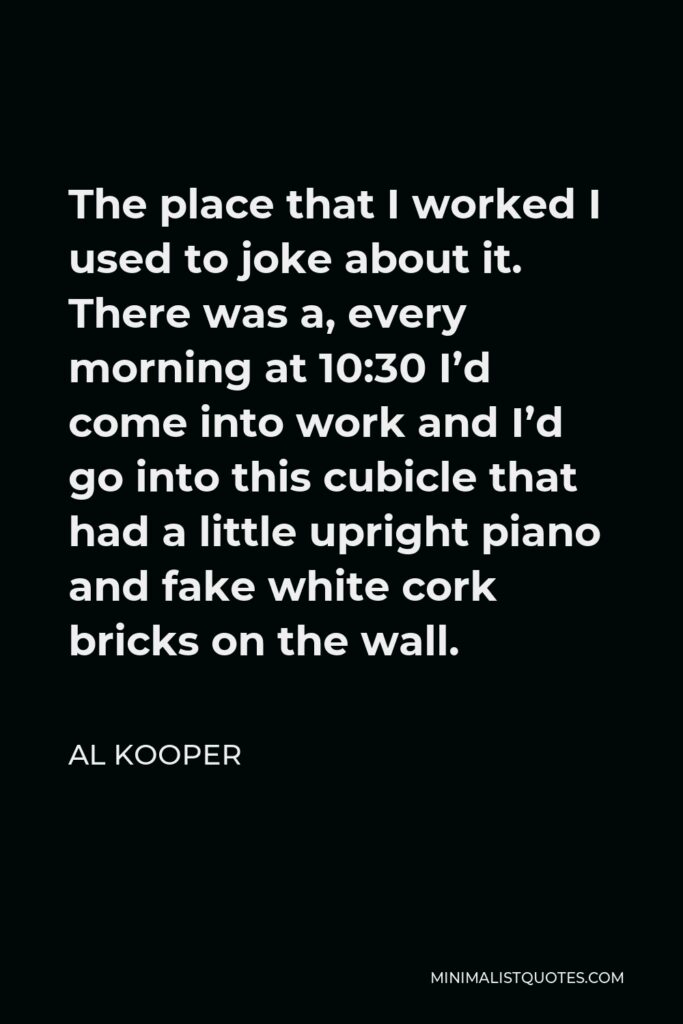

The place that I worked I used to joke about it. There was a, every morning at 10:30 I’d come into work and I’d go into this cubicle that had a little upright piano and fake white cork bricks on the wall.
AL KOOPER -





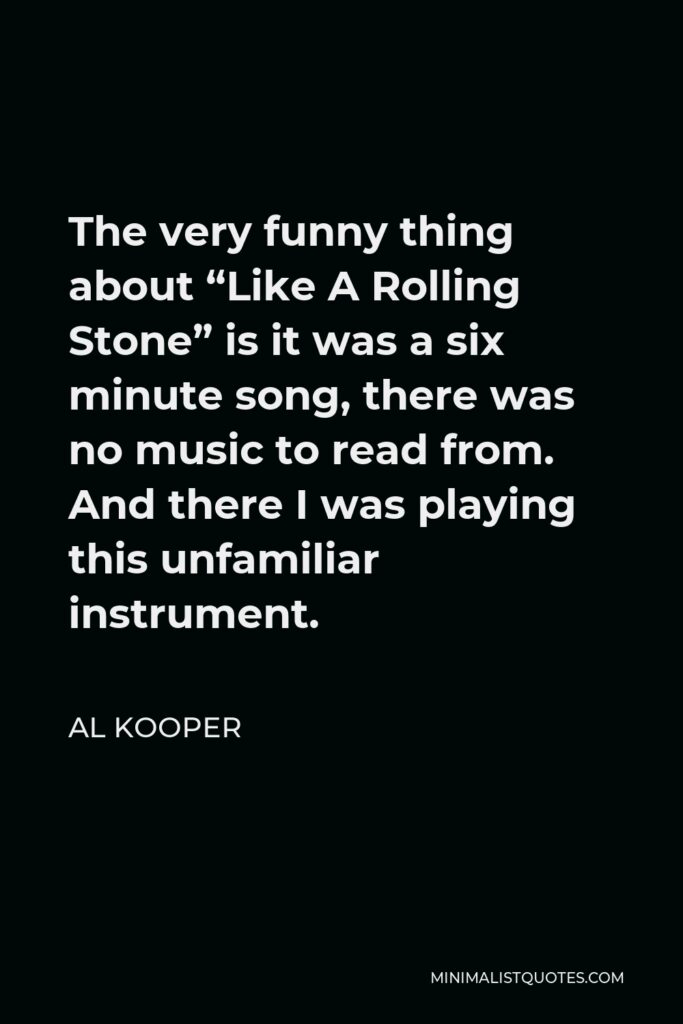

The very funny thing about “Like A Rolling Stone” is it was a six minute song, there was no music to read from. And there I was playing this unfamiliar instrument.
AL KOOPER -





![Al Kooper Quote - Musically Bob [Dylan] is a primitive. He’s not a Gershwin, or somebody that uses eloquent music terms.](https://minimalistquotes.com/wp-content/uploads/2022/07/musically-bob-dylan-is-a-primitive-hes-not-a-gersh-683x1024.jpg)

Musically Bob [Dylan] is a primitive. He’s not a Gershwin, or somebody that uses eloquent music terms.
AL KOOPER -





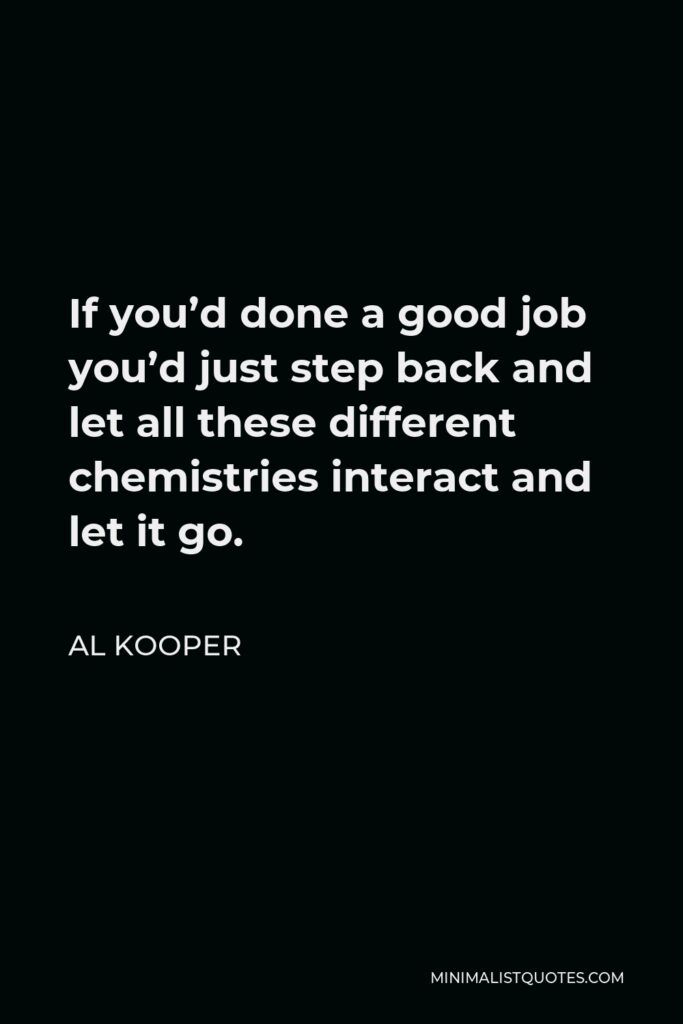

If you’d done a good job you’d just step back and let all these different chemistries interact and let it go.
AL KOOPER -





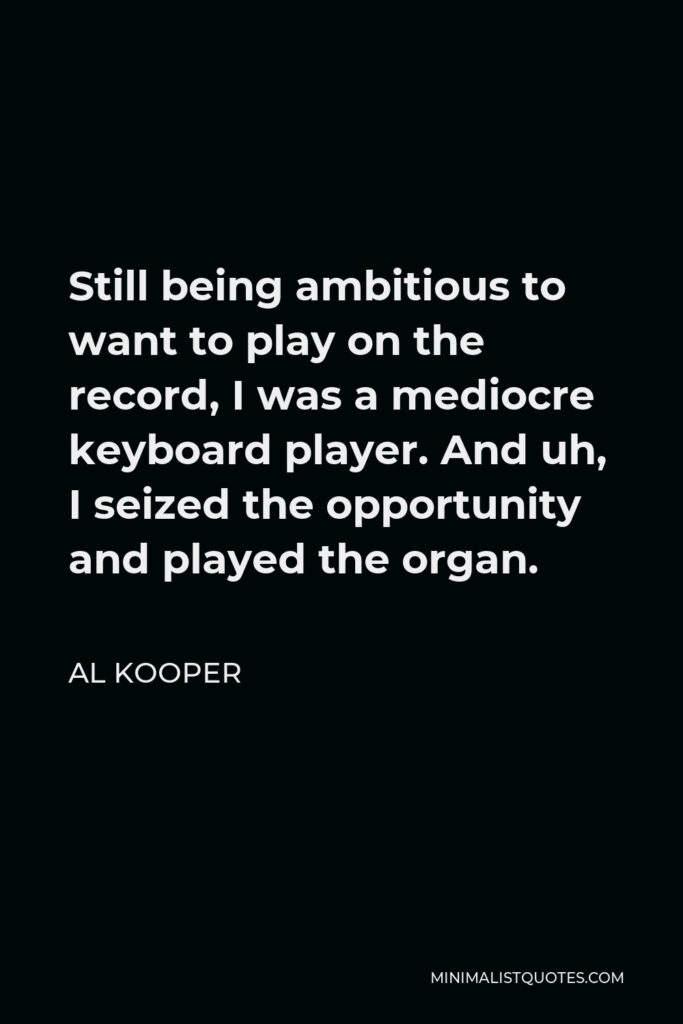

Still being ambitious to want to play on the record, I was a mediocre keyboard player. And uh, I seized the opportunity and played the organ.
AL KOOPER
